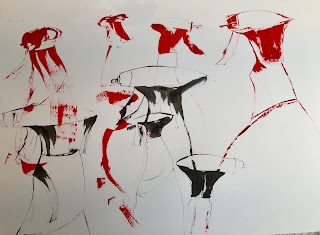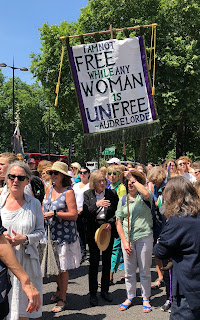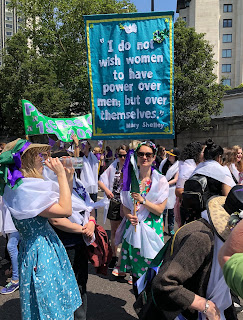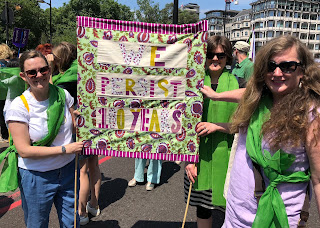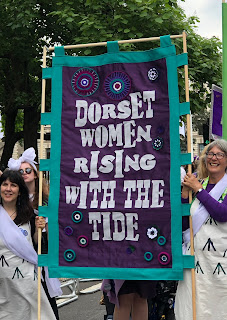NOTES OF TUTORIAL - IMOGEN RACZ/CATHY MACTAGGART
Wednesday 28 June 2018
I saw Imogen on 28 June 2018. I’d sent my essay, now called Gender Bias, to Imogen, and had revised it to the first 11 pages, on Chicago and Shapiro. The rest, on Guerrilla Girls and Grayson Perry was unedited (but my phraseology about ‘considerable gloss’ had made Imogen laugh!). This essay is making good progress.
We debated what I have to submit, as a part-timer, finishing year one. Imogen checked the writing word count. Part-timers need to submit 2 x 2,500 words, but I am part-time, and part of my submission is practical artwork. On checking, it turns out the word count is negotiable with my supervisors.
I find Imogen’s ability to sum up my theme in two words – Gender Bias – to be very helpful. She also gave me a few words to structure my final essay (deliverable next year), which I also find really useful.
Introduction – Set out research question.
The problem to address: the undervaluing of ‘low’ work eg Ford machinists, cleaners, housewives.
Chapter 1 – The system of value. (Current writing c2,000 words)
Chapter 2 – Gender Bias (current writing 5-6,000 words)
Chapter 3 – My work and how it fits.
Exploring samplers (c1500 words)
My exhibition, what I’ve done, why, and decisions made along the way
Conclusion
We debated materiality as used by Grayson Perry. Unassuming materials. Mundane. Soft materials (ie clay before firing). Scale.
I said I felt I had made immeasurable progress since being at Coventry. The combination of Jill as stitch specialist and Imogen as art historian suited my needs and style very well, and I am very glad to have transferred here. I’m finding my subject really interesting.
Imogen reminded me to get my act together and sort out the revised Ethics form!
Actions:
CMT to revise Ethics Form and send for approval.
CMT to finish working on GG/GP and send to Imogen.
CMT to attend seminar The Laugh of the Medusa, Helene Cixous on Weds 11/7/16
IR to send the above reading material?
Then I met with Darren and his Mum, Helen, who is over from South Africa to spend a 3 week holiday with her son. Helen and I hit it off straight away. We had a lovely meal in Wagamama, generally chewing the fat about what it is like to be a student, particularly comparing my study abroad experience in Perth, Australia, and Darren's experience here.

